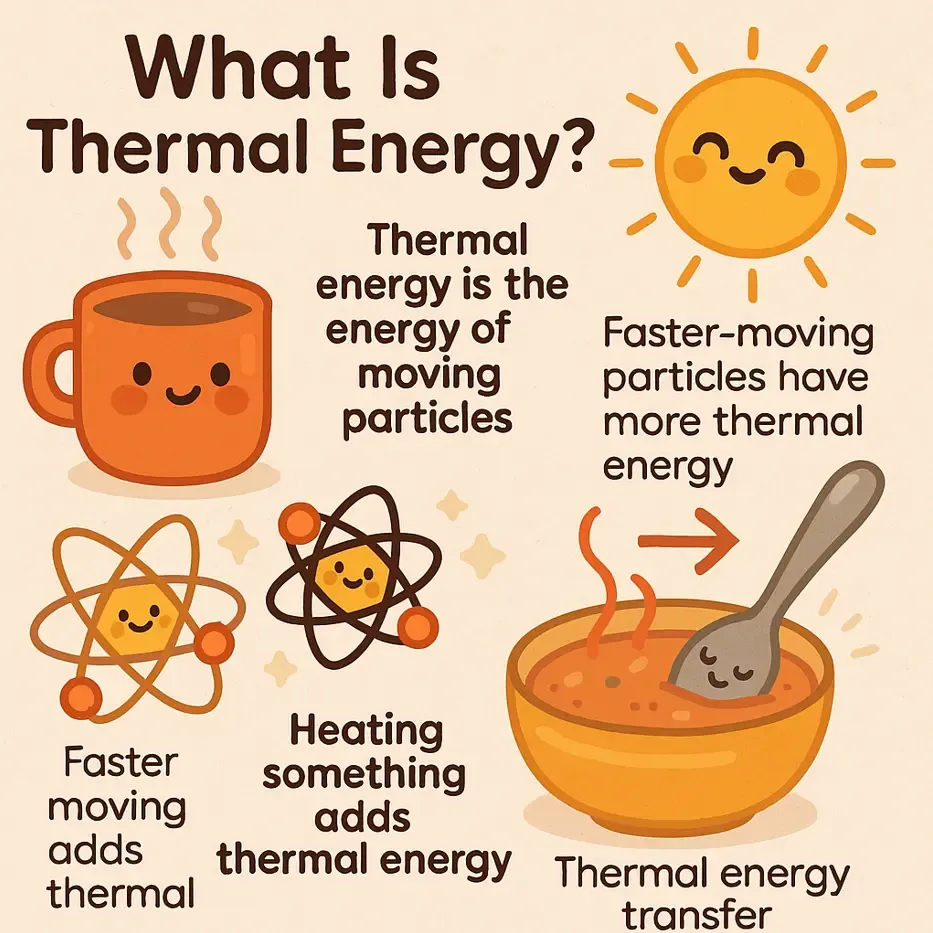What Is Thermal Energy? — Reading Comprehension
Grades
- 5
- 6
- 7
- 8
Standards
- MS-PS3
- HS-PS3
- RI.6.3
- RI.7.1
PRINT+DIGITAL RESOURCE
This learning resource is available in interactive and printable formats. The interactive worksheet can be played online and assigned to students. The Printable PDF version can be downloaded and printed for completion by hand.
About This Reader
This middle school science passage, 'What Is Thermal Energy?', introduces students to the concept of energy from particle motion inside matter. The passage explains that thermal energy depends on both particle speed and quantity, and that it transfers between objects by conduction, convection, and radiation. It clarifies the difference between temperature and thermal energy with real-life examples like hot soup, metal spoons, and campfires. Aligned with NGSS MS-PS3-3 and Common Core literacy standards RI.6.1 and RI.6.4, the passage includes 8 comprehension questions, vocabulary practice, and a fun science fact. Ideal for supporting energy unit instruction in grades 5–8.
Perfect For:
👩🏫 Teachers
- • Reading comprehension practice
- • Auto-graded assessments
- • Literacy skill development
👨👩👧👦 Parents
- • Reading practice at home
- • Comprehension improvement
- • Educational reading time
🏠 Homeschoolers
- • Reading curriculum support
- • Independent reading practice
- • Progress monitoring
Reading Features:
📖
Reading Passage
Engaging fiction or nonfiction text
❓
Comprehension Quiz
Auto-graded questions
📊
Instant Feedback
Immediate results and scoring
📄
Printable Version
Download for offline reading
🔊
Read Aloud
Voice-over with word highlighting






















